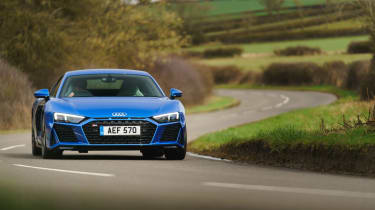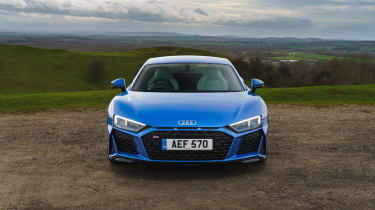Audi R8 review – design
This is where the R8 falls down, as the second take on the original R8’s innovative aesthetic is contrived and sometimes awkward
Think back to 2015 when this car debuted and you may remember, not all took kindly to the design of the second-generation R8. It was always going to be a difficult second album to what was arguably one of the most innovative, contemporary mid-engined sports car designs of all time.
It still had much of what made the original so spectacular, just less of it. Some didn’t like the split blades, others were perturbed by the strange trapezoidal exhausts. This second-generation R8 also split up the side blade. Though it was still customisable, it lost much of the impact that made the original such a unique design element.
If it wasn’t as pretty as the original, the second-gen still had an effortlessly exotic yet contemporary presence – a real four-square stance and razor-sharp line definition.
The facelift got fussier still, though it did make a return to Audi-typical oval exhausts. The front end’s aggressive openings and those three (fake) slip vents under the bonnet shut line spread across Audi’s range, bringing the R8 more in-line with the rest of the range than it ever had been. Almost a first for Audi at the time was the fact that the R8’s was a facelift that didn’t get new lights. The original 2015’s carried over at both the front and rear, the fronts getting strange fake vent trim next to them.
Bigger, delicately spoked 20-inch wheels, lots of additional carbon on the sills, wings and bootlid, and those pesky black badges were common options too, if that’s your jam. The right R8 for you will be more difficult to find, if not. The hyper aggressive GT RWD model goes further with its extended splitter, sills, dive planes and an enormous rear wing, all of which were designed to keep the R8 planted at track speeds.



